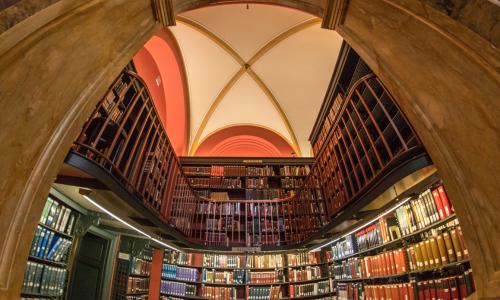“I have always imagined that Paradise will be a kind of library.” – Jorge Luis Borges
Siempre imaginé que el Paraíso sería algún tipo de biblioteca. – Jorge Luis Borges
When I received the invitation to apply to the Library of Congress Summer Institute, I must admit that I was a little intimidated by the proposition. In my mind, the Library of Congress was a place for university graduate students, lawyers, judges, and others interested in extensive, scholarly research. How could time-strapped teachers utilize such a massive collection of information?
I didn’t have to worry. The experience at the Library of Congress Summer Institute showed me how. At the Library of Congress, I found a rich resource to support teaching and learning at all grade and language proficiency levels. During the institute, there was a focus on exploring the role of primary sources in the development of critical and analytical thinking skills – must-haves for our 21st century students.
Primary Resources: FAQs
How do you define primary resources?
The Library of Congress defines primary sources as the raw materials of history – original documents and objects which were created at the time under study. They are different from secondary sources, accounts or interpretations of events created by someone without firsthand experience.
What makes primary resources so compelling?
Students working with primary sources are actually working with a piece of history. Primary sources invite learners to generate their own inferences and interpretations. In essence, students become historians-in-training.
Are there reasons that primary resources are particularly engaging for English learners?
The non-linguistic nature of many primary sources can be very inviting to English learners. Students can examine paintings, prints, photographs, music, maps, films and other rich historical artifacts. These artifacts can help students access their prior knowledge and/or build background knowledge of the content being taught in the classroom.
The LOC has a primary source analysis tool that allows students at different levels of language proficiency to interact with the primary source. Students can be guided to share their observations, reflections and questions. Beginning level students can work with partners, use a word bank, or use bilingual dictionaries to participate in the analysis. Teachers can offer question starters and sentence frames to assist students with the discussion.
What is the role of primary resources in the Common Core?
The major shifts of the Common Core State Standards highlight the need for students to practice with complex texts and academic language, to use text-based evidence to support claims, and to build knowledge through non-fictional resources. Primary sources are non-fictional resources that can be employed during instruction to support the standards. Additionally, the Common Core Standards for Literacy in History/Social Studies, Science, and Technical Subjects specifically require that students interact with primary sources for a variety of purposes.
Is there guidance on using the LOC sources along with the Common Core?
The Classroom Materials section gives teachers the option of searching for materials by standards – Common Core, State Content, or Organizations.
Library of Congress: Classroom Resources
What kinds of primary resources are available through the LOC?
The website for the Library of Congress has collection highlights that include prints & photographs, performing arts, film, historical newspapers, veteran history, American memory, sound recordings manuscripts, and maps. Teachers may want to start by clicking on the Especially for "Teachers" link just below the collections, and then click on Classroom Materials on the side bar. The LOC offers teachers Primary Source Sets, Lesson Plans, Presentations and Activities, Themed Resources, and Collections Connections. There is also an "Ask a Librarian" option on the main site that allows teachers to communicate with the LOC via e-mail.
How can teachers around the country access these materials?
The materials can be accessed through the website. For example, the primary source sets can be viewed as PDFs and downloaded for classroom use.
Is there a cost or registration required?
There is no registration required and the materials are free for classroom use.
Ideas for ELLs
What are some ideas and activities for using these resources with and engaging ELLs?
According to the Center for Applied Linguistics, English learners benefit from lessons that focus on vocabulary development, access background knowledge, increase comprehensible input, increase social interactions, and increase higher-order thinking. Primary sources can assist teachers in achieving these objectives. Students can develop content vocabulary by engaging in academic discourse about primary source documents. Teachers can use visual thinking strategies to model the observation process. Students can then work collaboratively to discuss inferences and formulate questions.
Recommended Resources
The following webinar on is availabke on ShareMyLesson:
English Learners, the Common Core, and Primary Sources
Photo Credit: George Crofutt, 1873. Available on the Library of Congress website: http://www.loc.gov/pictures/item/97507547/








Add new comment